Ladies and gentlemen,
During the war in Vietnam, from 1961 to 1971, very toxic chemicals were used by US military forces and sprayed on Vietnamese territory, especially in the central and southern regions of this country.
According to the most recent data, the US has used more than 77 million liters of different defoliants to spray over 2.6 million hectares, which is 10% of the country’s territory from the 17th parallel and inward. The spraying of toxic chemicals directly affected between 2.1 and 4.8 million people living in 20,000 villages. All of these substances contained toxic defoliants, in different proportions, including dioxin. The product that contains the most dioxins and is the most widely used, accounting for 60% of these toxins, is called “Agent Orange”.
The name "Agent Orange" is associated with the danger of sprayed products. In the contracts signed between the chemical companies that produced the herbicide and the US military, the chemical composition of the products was not mentioned. The different categories of defoliants can only be identified by the different colored lines on the container, orange indicating the most dangerous ingredient.
Products were sprayed in the form of mist, mainly via aircraft, the goal of which was to permanently destroy the vegetation cover of the sprayed areas in order to deprive the food supplies, destroy agricultural crops, and on the other hand make Vietnamese troops no where to hide.
However, this decision was made without considering the serious consequences for the environment and the health of exposed people (including both Vietnamese and American troops). Since 1966, for the first time at the international level, the use of these chemicals of the United States has been denounced and condemned right in the US, especially warnings from American scientists.
When the war ended, Vietnamese people living in the affected areas knew that the above toxic substances were used but did not know about its terrible effects on humans and the environment. Few years later, diseases or malformations caused by exposure to these toxic chemicals appeared, seriously affecting the environment and human health.
Today, we celebrate the 60th anniversary of the first day of spraying the above hazardous products. Vietnamese people are affected not only by direct exposure to the chemicals, but the consequences also passed on to their children and grandchildren, leading to serious pathologies, such as: chloracne, Hodgkin's, lymphoma, sarcoma or leukemia. Health authorities and representatives of the Vietnam Red Cross have warned about the extent of the damage, including descendants of the direct victims up to their fourth generations affected with many deformities in the development process.
The risks associated with the aforementioned hazardous products were not known at the time of their widespread spraying and all such contaminated areas have yet to be fully identified. Some provinces were seriously affected by heavy spraying; part of the population of these provinces migrated to other parts of the country, which resulted in a disturbance of the exposed population throughout the territory. On the contrary, healthy people from other provinces come to live in heavily sprayed provinces and they are affected in the polluted environment.
Dioxin is an exceptionally stable substance that withstands extreme temperature of above 1000°C. It is sparingly soluble in water, but accumulates in fats and enters the human body through the food chain. The long-term stability of dioxins has resulted in the fact that residents of the affected areas continue to expose to it after the end of the war, thereby causing many cases of cancer or birth defects.
The effects of the above hazardous products are harmful to the environment (soil, sediment, water) and plant forms (forests, mangroves, savannahs) and animals, causing losses of food output (agriculture, seafood). Considering the extent of the release of the above toxic products to Vietnam's environment, some scientists have rated the use of dioxin by the US military in this war as the biggest “destruction of the environment” of the 20th century.
While one might hope that traces of the Agent Orange and other dioxin products tend to disappear over the years, a number of studies have shown that levels of dioxin are still too high in certain "hot spots" areas; some places have concentrations higher than sixty times the allowable toxicity threshold.
.png)
This situation requires measures to be taken to: Protect populations; Treat the people affected by these toxic products; and Restore the environment.
Past and present humanitarian aid has been disproportionate to the actual need to deal with the populations involved and decontaminate the affected areas. The latest estimates suggest that as many as 5 million people are directly or indirectly affected by those hazardous chemicals. International organizations and countries, on the one hand, should provide support for Vietnam and take actions to comply with the claim and provide adequate assistance to the victims. Companies that produced hazardous chemicals must participate in this aid and therefore - ultimately - must assume their responsibilities. Because to date the question of responsibility has never been fully answered.
The federal state of the United States is the first entity should be held accountability for their victim soldiers of Agent Orange/dioxin, but the government enjoys immunity from any action committed in wartime. In 1984, US veterans infected with Agent Orange sued the herbicide/defoliant manufacturers. Monsanto and six other companies then had to enter into an out-of-court settlement with the Veterans Affairs Association of America in exchange for a waiver of any prosecution, with an amount of $180 million.
In 2004, the Vietnam Association for Victims of Agent Orange/dioxin filed a class-action lawsuit against chemical companies producing herbicides for crimes against humanity and war crimes. However, the court rejected the lawsuit on the grounds that Agent Orange/dioxin is not a poison under international law.
In 2006, during George W. Bush's visit to Vietnam, this problem began to be resolved. Besides a budget for research on dioxins during the war in Vietnam, there were also aids for the remedial work in several highly contaminated areas, or "hot spots". But aid is hardly enough compared to the great responsibility of the United States. For example, it is necessary to decontaminate more than 250,000 cubic meters of land at Bien Hoa airport - the military base where most aircraft tasked with spraying the aforementioned toxic products were deployed.
In 2011, the Korean Court ruled for 39 veterans with internal diseases due to exposure to Agent Orange/dioxin and asked the two companies of Monsanto and Dow Chemical which produced and supplied the most defoliants to pay compensation to them.
Since 2015, Ms. Tran To Nga, a French-Vietnamese direct victim, filed her lawsuit to the French court, starting a long legal battle, on behalf of all Vietnamese victims against companies that manufactured defoliants for the US military, to force them to take responsibility for the terrible human and environmental disasters in Vietnam. It is in this context and with the nearly fifty-year development of bilateral diplomatic relations between Belgium and Vietnam, that the authors of this document propose a resolution to arouse the sympathy of the international communities in support for those who are victims of Agent Orange in Vietnam.
André FLAHAUT (PS)
Christophe LACROIX (PS)
Guillaume DEFOSSÉ (Ecolo-Groen)
Els VAN HOOF (CD&V)
Vicky REYNAERT (Vooruit)
Wouter DE VRIENDT (Eco-Groen)
On February 21, in Hanoi, the delegation of the Belgium - Vietnam Friendship Association headed by President Pierre Grega visited and worked with the Central Committee of the Vietnam Association for Victims of Agent Orange/dioxins.






















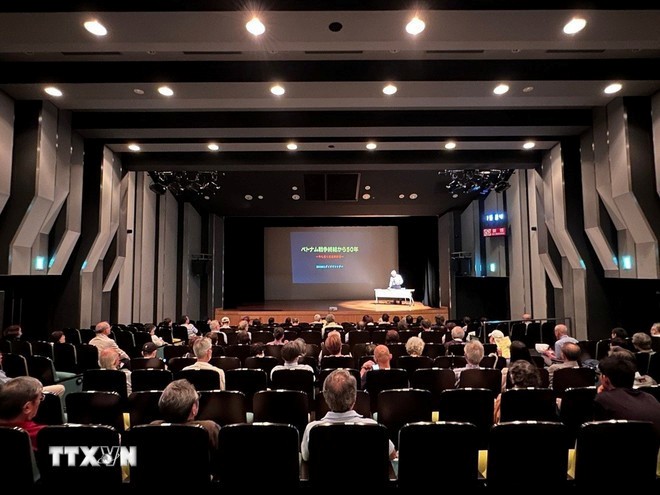
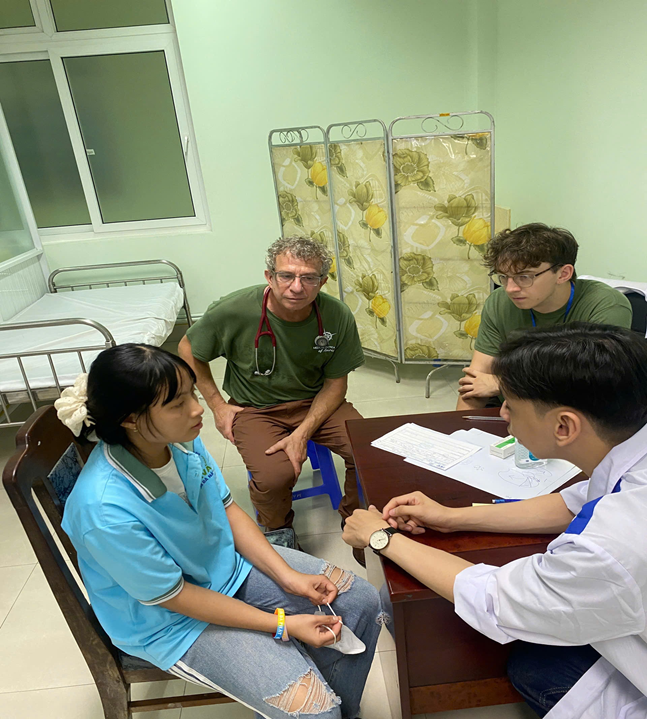
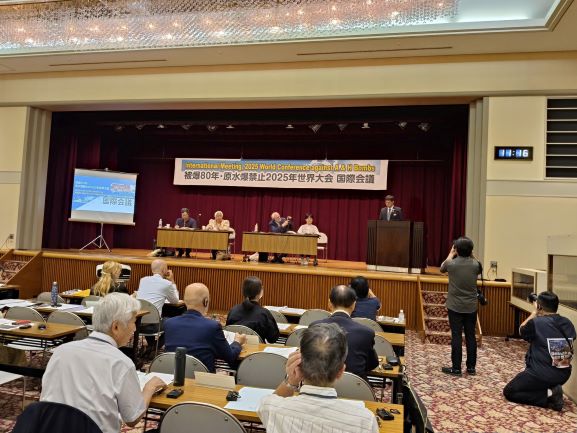
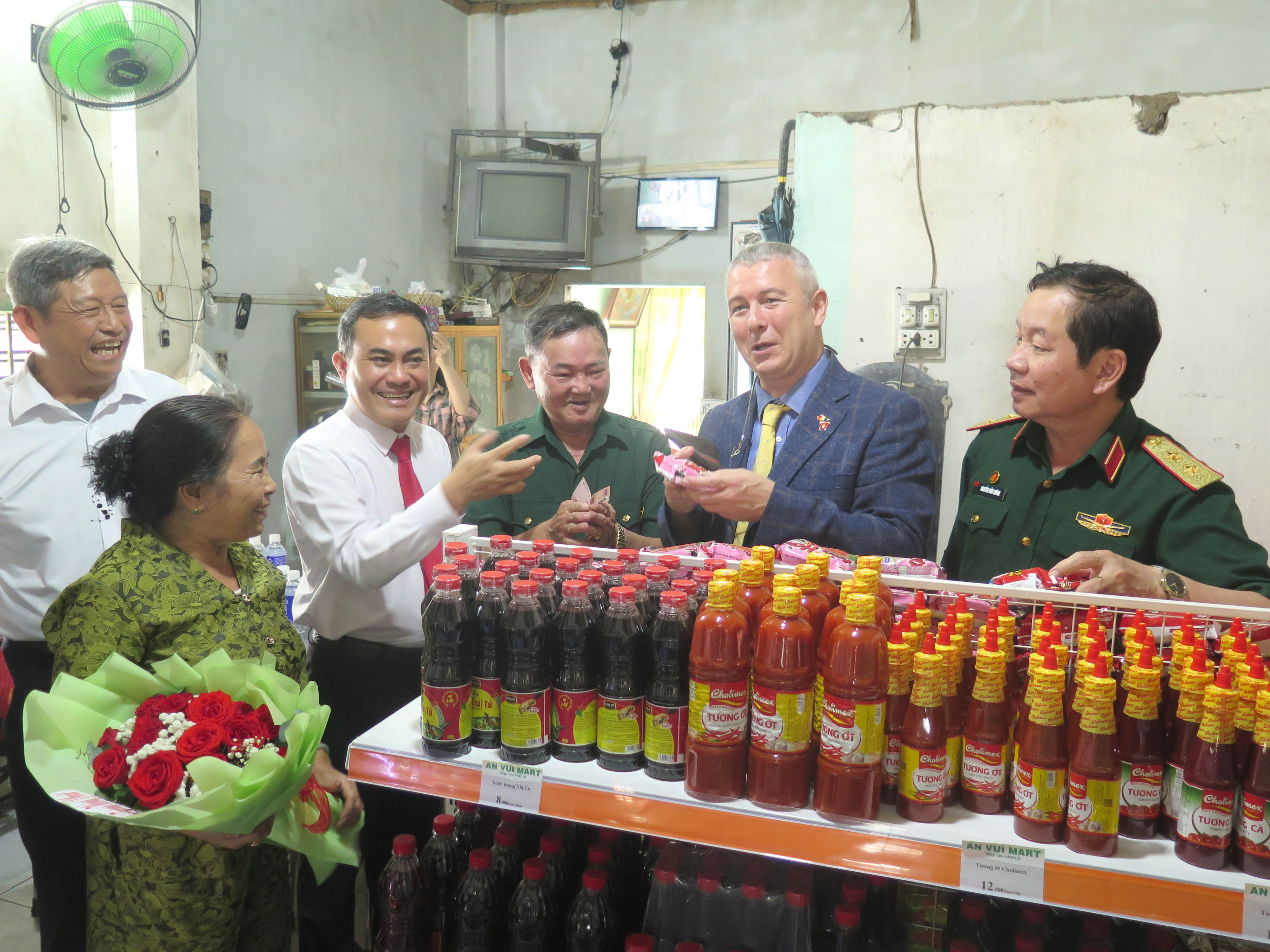
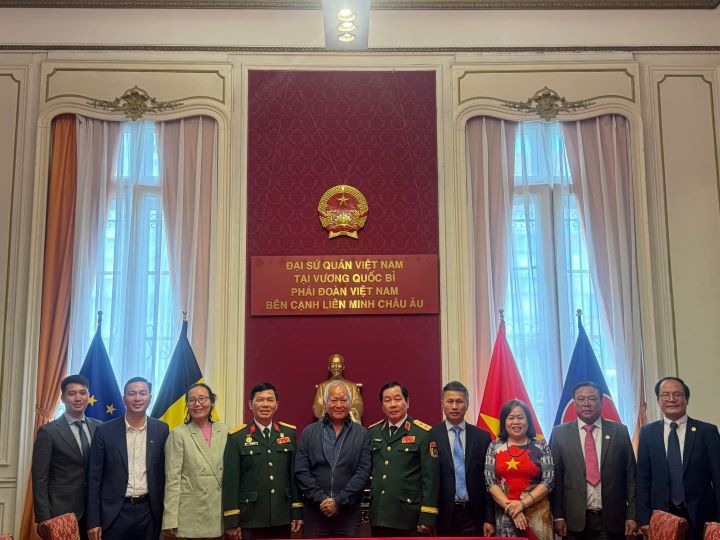






Comment